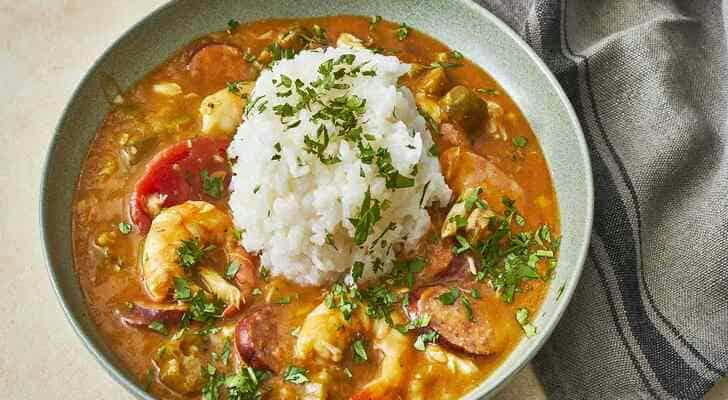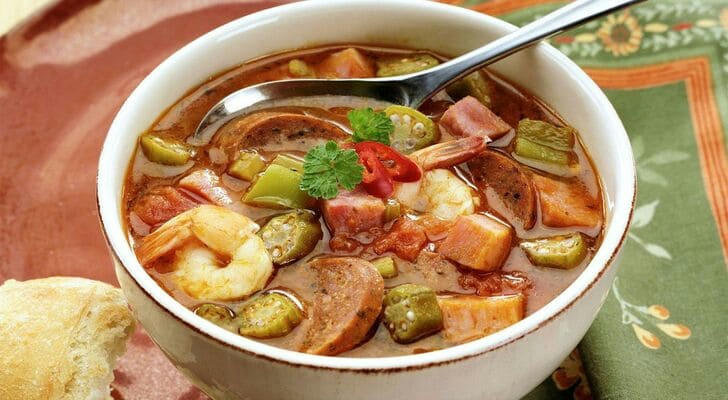A Taste of America: Gumbo in New Orleans

There are few dishes that capture the spirit of a place as vividly as gumbo does for New Orleans. A steaming bowl of this rich, savory stew tells a story of cultural fusion, history, and the soulful essence of the American South. Gumbo is more than just food—it is tradition, identity, and community in one pot. With deep roots in Creole and Cajun heritage, gumbo stands as one of the most iconic representations of regional cuisine in the United States.
The Origins of Gumbo: A Cultural Melting Pot
Gumbo is a product of cultural convergence. The dish draws from a variety of culinary traditions, including West African, French, Spanish, and Native American influences. The very name “gumbo” is believed to come from the West African word ki ngombo, meaning okra, one of the key ingredients in many traditional versions.
In Louisiana’s colonial period, enslaved Africans brought their cooking techniques and ingredients, such as okra and rice, which merged with French roux-based stews and Spanish seafood and sausage dishes. Native Americans contributed with the use of filé powder, a ground sassafras leaf used as a thickening agent. This blend of diverse ingredients and preparation methods gave birth to a dish that is as layered in history as it is in flavor.
Types of Gumbo: From Creole to Cajun
Though often grouped together, Creole and Cajun gumbo are distinct in both ingredients and taste. Creole gumbo, more common in New Orleans, typically features a tomato base, shellfish like shrimp or crab, and often includes okra. It is known for its complex flavors and a rich, reddish color.
On the other hand, Cajun gumbo, found more in rural Louisiana, usually avoids tomatoes and instead builds flavor from a dark brown roux—flour and fat cooked until deep in color. It often includes chicken, sausage (especially andouille), and the "holy trinity" of vegetables: onions, bell peppers, and celery.
Each variation of gumbo is a reflection of local tastes, available ingredients, and family traditions. Even within New Orleans, no two gumbos are ever exactly the same.
Key Ingredients and Cooking Techniques
Making gumbo is both an art and a science. The foundation is the roux, a carefully cooked mixture of flour and fat that adds depth and body to the dish. This is typically followed by sautéing the trinity of vegetables, which form the aromatic base.
Protein is then added—ranging from seafood to smoked meats—followed by stock, spices, and thickeners like okra or filé. Gumbo is always served over rice, creating a satisfying, hearty meal that brings people together.
The process is slow and intentional. A good roux can take 30 to 45 minutes to prepare, requiring constant stirring and patience. It's not just cooking; it’s a ritual that invites care and attention, much like the cultural traditions it represents.

Gumbo and Community: A Dish That Brings People Together
Gumbo is often at the center of gatherings, whether it’s a family reunion, a Mardi Gras celebration, or a church fundraiser. In New Orleans, gumbo is a symbol of togetherness. The act of preparing gumbo—chopping vegetables, stirring the pot, tasting as it simmers—is often shared among friends and family.
It’s also a dish that evolves with the times. While traditional recipes are cherished, modern chefs and home cooks alike continue to experiment with ingredients, sometimes introducing vegetarian or even vegan versions, without losing the spirit of the dish.
Many locals will say that everyone’s mom or grandmother makes the best gumbo. It’s a personal dish, filled with emotion, memory, and pride. That’s why gumbo competitions and cook-offs are so popular—each version tells a story of origin and personal taste.
Where to Try Gumbo in New Orleans
If you’re visiting New Orleans, sampling gumbo is a culinary must. Restaurants across the city offer their own interpretations of the dish. In the French Quarter, you'll find elegant Creole versions with blue crab and shrimp. Head to Treme or the Garden District for heartier Cajun styles featuring dark roux and smoked sausage.
Local institutions like Dooky Chase's Restaurant, Coop’s Place, and Gumbo Shop are popular stops for tourists and locals alike, each serving up unique takes on this classic. Street festivals, food tours, and cultural events also provide opportunities to try home-style gumbos and meet the cooks behind them.

Gumbo as a Symbol of New Orleans
Beyond its flavor, gumbo symbolizes the cultural identity of New Orleans. Just as the city is a blend of histories and people, so is gumbo a mixture of diverse ingredients and cooking styles. It’s a dish that celebrates resilience, creativity, and hospitality—key characteristics of the city itself.
Whether enjoyed during Carnival season, served at a family dinner, or tasted for the first time by a curious traveler, gumbo leaves an impression. It speaks not just to the palate, but to the heart.
Conclusion
Gumbo is more than just a traditional Southern stew. It’s a culinary narrative of New Orleans—a story told with spice, soul, and a spoon. Through every bite, you taste the layers of culture, history, and home that define one of America’s most beloved dishes. In discovering gumbo, you discover a part of America’s rich and flavorful identity.
